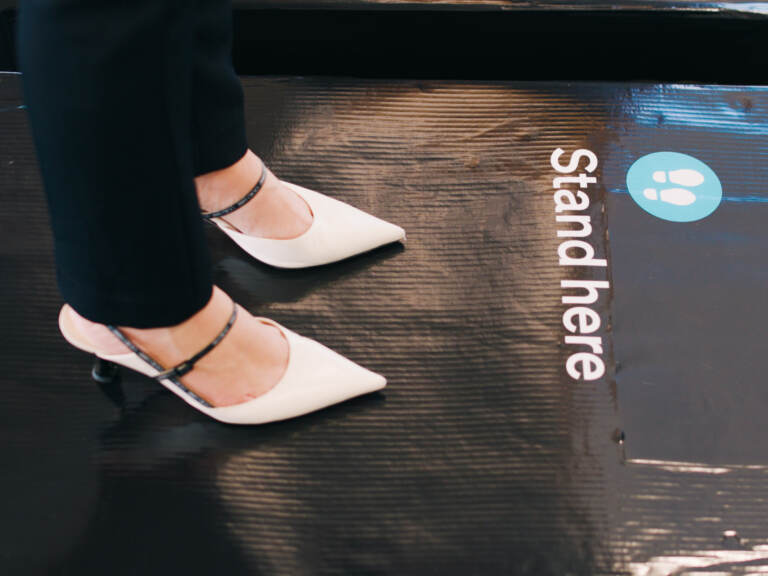This airline is weighing passengers before they board international flights

A passenger stands on scales at Auckland International Airport as part of a survey to generate average weights for people traveling on Air New Zealand flights. (Courtesy of Air New Zealand)
It’s normal to weigh passengers’ bags when checking in for an international flight — but in Auckland, it’s the passengers who are now getting onto scales before flying abroad on Air New Zealand.
The goal isn’t to single out passengers who might contribute to a plane being overloaded or out of balance — instead, the airline says, the process is part of a survey to gather real-world information.
“For safety reasons we need to know the weight of all items onboard the aircraft,” the airline says. The survey is mandated by the country’s Civil Aviation Authority, the airline said in a message to NPR.
Passengers’ weights are recorded anonymously
“We weigh everything that goes on the aircraft — from the cargo to the meals onboard, to the luggage in the hold,” so that pilots can know the weight and balance of the aircraft, Alastair James, a load control specialist for the airline, said. “For customers, crew and cabin bags, we use average weights, which we get from doing this survey.”
“No one can see your weight — not even us!” James added. Still, he acknowledged that stepping onto scales in public “can be daunting.”
A person’s weight is a private issue; for anyone concerned that a digital readout might blare their weight for anyone to see, the airline says it can’t happen: “The scales do not display the weight as this is fed directly into a computer and recorded anonymously along with thousands of other passengers.”
The weigh-in takes place before passengers reach their boarding gate. Anyone who doesn’t want to take part in the survey can simply skip it. The goal is to get readings from at least 10,000 air passengers.
Passengers’ carry-on bags are also weighed in the survey, which the airline says it carries out every five years. It began the survey on Sunday and will continue it until early July.
The weight survey falls far short of a controversial plan launched by Samoa Air in 2013, when it moved to charge each passenger an airfare based on their weight. But the company wasn’t alone.
“If they had their way, airlines would love to weigh passengers as they get on the planes, but it would be too embarrassing,” as science writer Brian Clegg once told NPR. “In fact, they actually used to do it in the very early days of flight.”
Data is used to calculate flights’ balance and weight
Weight affects everything from a plane’s climb rate to its cruising altitude, speed and maneuverability, as the U.S. Federal Aviation Administration notes. And overloading is a big concern, especially on overseas flights.
“Most modern aircraft are so designed that, when all seats are occupied, the baggage compartment is full, and all fuel tanks are full, the aircraft is grossly overloaded,” the FAA says.
With that in mind, airlines and pilots must ensure planes have the proper weight and balance for flight safety.
“If maximum range is required, occupants or baggage must be left behind,” the FAA says, “or if the maximum load must be carried, the range, dictated by the amount of fuel on board, must be reduced.”
Such concerns are vital for any airline, particularly in an island nation like New Zealand, where Air New Zealand jets take off for long-haul international flights — like a non-stop trip from Auckland to New York City. The airline is also preparing to roll out more amenities, including “Skynest” bunk beds on long routes.
As researchers recently highlighted, 12% of the country’s carbon emissions came from the aviation industry — far higher than the global average of 2.8%.
9(MDAzMzI1ODY3MDEyMzkzOTE3NjIxNDg3MQ001))




